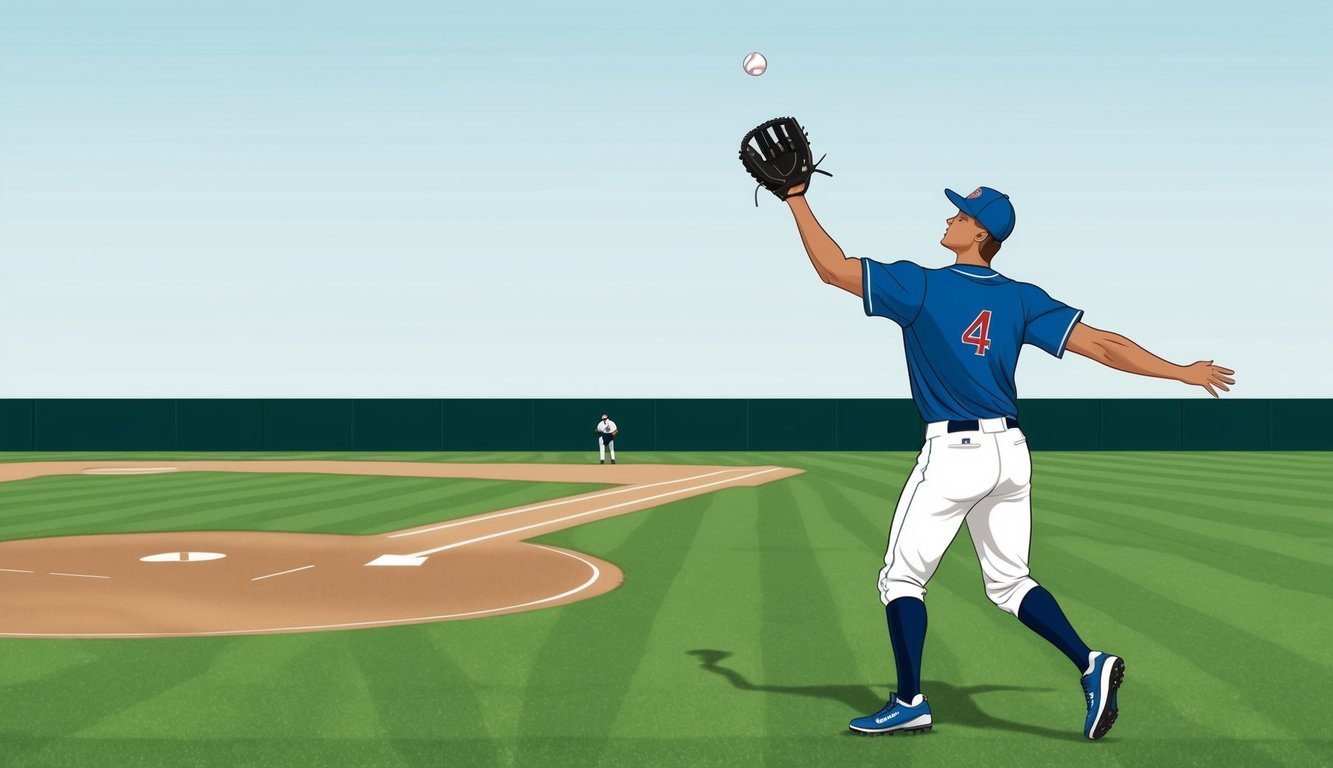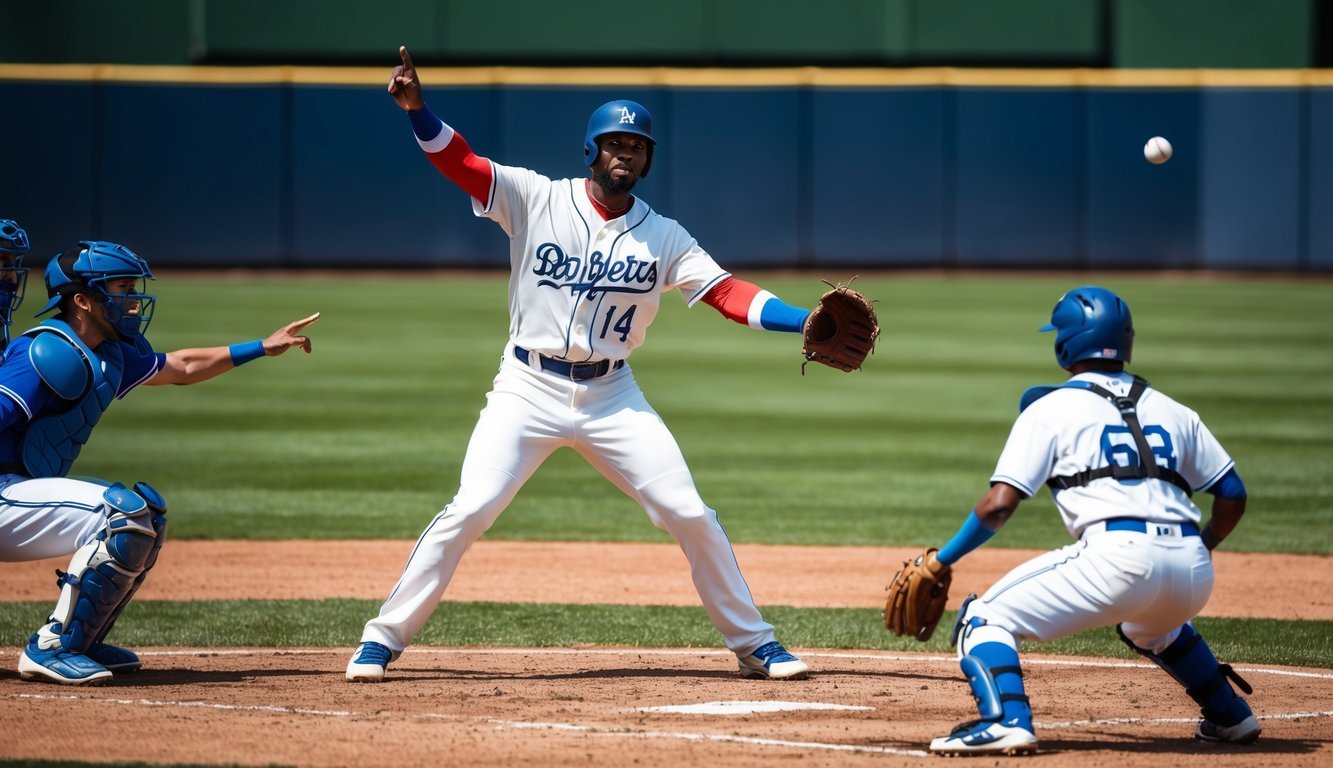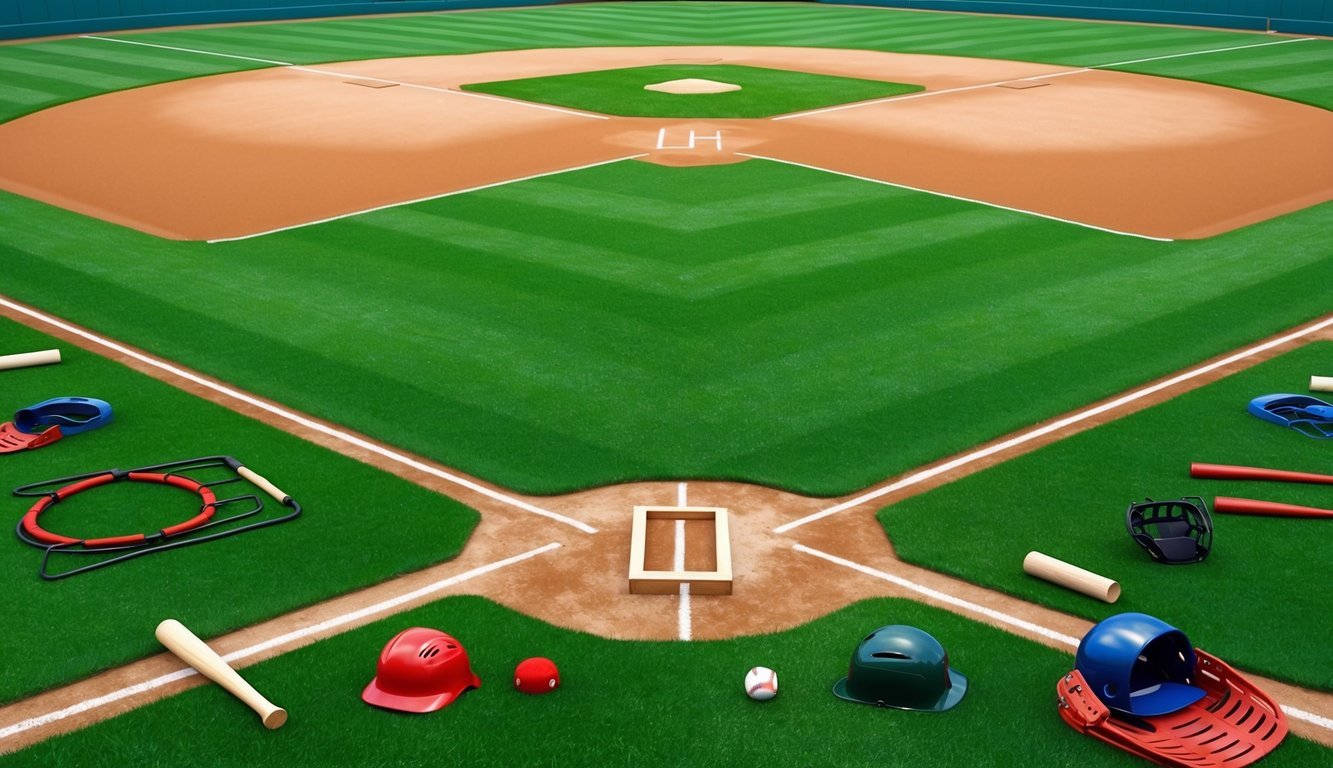Baseball’s outfield is a realm of excitement and skill, where players showcase their athleticism and defensive prowess.
Covering vast expanses of green, outfielders are tasked with tracking down fly balls, charging grounders, and making spectacular catches. To master outfield play, you need a combination of speed, agility, arm strength, and quick decision-making abilities.
Developing these skills is crucial for any aspiring outfielder.
From perfecting routes to fly balls to executing precise throws to the infield, outfielders must hone various techniques to excel in their position.
Communication with fellow outfielders and infielders is also essential, as it helps prevent collisions and ensures seamless defensive coordination.
Success in the outfield often translates to team success.
A well-executed catch or throw can change the momentum of a game, turning potential hits into outs and saving runs.
As the last line of defense, outfielders play a pivotal role in shutting down opposing offenses and contributing to their team’s victory.
The Role of the Outfielder

Outfielders play a crucial part in baseball’s defensive strategy.
They cover vast areas of the field, make spectacular catches, and prevent runners from advancing.
Each outfielder has unique responsibilities, with center field’s defensive role often regarded as the most important.
Positioned between the left and right fielders, the center fielder needs to possess exceptional speed and awareness, ensuring they can back up their teammates while also reading the ball’s trajectory.
Their ability to communicate effectively with the other outfielders is essential in executing successful plays, especially during critical moments of the game.
Defining the Position
Outfielders occupy the grassy area beyond the infield dirt.
The outfield consists of three positions: left field, center field, and right field.
These players form the last line of defense against batted balls that make it past the infield.
Each position requires a unique blend of speed, arm strength, and fielding skills.
Center fielders often cover the most ground, while corner outfielders (left and right) specialize in playing balls hit down the foul lines.
The dimensions of the outfield vary by ballpark, adding an extra challenge for players who must adapt to different field layouts.
Responsibilities and Duties
Outfielders have several key duties:
- Catching fly balls
- Fielding ground balls that get through the infield
- Throwing accurately to prevent runners from advancing
- Backing up infielders on plays
Quick reflexes and good judgment are essential for outfielders to track down fly balls.
They must be able to read the ball off the bat and take efficient routes to make catches.
When fielding ground balls, outfielders need to charge the ball aggressively to keep runners from taking extra bases.
Strong, accurate throwing arms allow outfielders to make plays at various bases or home plate.
Famous Outfielders in History
Many legendary players have roamed the outfield grass.
Willie Mays, known for his iconic over-the-shoulder catch, set the standard for center field play.
Hank Aaron’s powerful bat and steady glove work in right field helped him become baseball’s home run king for decades.
Ty Cobb terrorized opponents with his aggressive baserunning and excellent defense in center field.
Joe DiMaggio’s grace and consistency in center field for the Yankees earned him the nickname “The Yankee Clipper.”
Ted Williams dominated left field for the Red Sox, combining his hitting prowess with solid defensive skills.
Babe Ruth began his career as a pitcher before becoming one of the most famous right fielders in history.
Ken Griffey Jr.’s acrobatic catches and smooth swing made him a fan favorite in center field during the 1990s and 2000s.
Mastering Outfield Techniques
Outfield excellence requires a combination of skills, from catching high flies to fielding grounders and making accurate throws.
These techniques form the foundation of outstanding outfield play.
Catching High and Low
Catching fly balls is a critical skill for outfielders.
To track high flies, use the drop step technique.
Turn your body sideways and take a quick step back with your glove-side foot.
Keep your eye on the ball and adjust your position as needed.
For low line drives, start in a ready position with your feet shoulder-width apart.
Stay low and move forward quickly.
Extend your glove toward the ground, keeping it open and ready to receive the ball.
Practice judging ball trajectories in different wind conditions.
Use a partner or coach to hit various types of fly balls.
Work on your first step and route to the ball to improve efficiency.
Fielding Ground Balls
Outfielders must also handle ground balls effectively.
Approach the ball aggressively, getting your body in front of it.
As you near the ball, lower your center of gravity and widen your stance.
Use the two-hands technique for added security.
Bring your glove down with the fingers pointing toward the ground.
Field the ball out in front of your body, using your bare hand to secure it in your glove.
For balls hit directly at you, charge forward to cut off any potential hops.
This aggressive approach helps prevent bad bounces and allows for quicker throws to the infield.
Improving Throwing Accuracy
Strong, accurate throws are crucial for outfielders.
Start by mastering the crow hop.
As you field the ball, use a quick hop to generate momentum and align your body toward the target.
Focus on proper arm mechanics.
Keep your elbow above your shoulder and follow through with your throwing motion.
Point your non-throwing shoulder at the target for better accuracy.
Practice long toss regularly to build arm strength.
Start at a comfortable distance and gradually increase as your arm gets stronger.
Aim for specific targets to improve precision.
Work on quick releases to get the ball in faster.
Field the ball cleanly and transition smoothly into your throwing motion.
This skill is especially important when trying to throw out runners.
Physical and Mental Preparedness
Outfielders need a mix of physical skills and mental sharpness to excel on the field.
Quick reactions, keen anticipation, and unwavering focus are key to success in the outfield.
Speed and Agility
Outfielders must be quick on their feet to cover large areas of the field.
Sprint training and agility drills are crucial for developing the explosive speed needed to chase down fly balls.
Incorporate ladder drills, cone exercises, and short sprints into your routine to improve footwork and acceleration.
Plyometric exercises like box jumps and bounding can enhance an outfielder’s ability to make leaping catches.
Work on changing directions quickly to mimic the unpredictable paths of batted balls.
Practice fielding ground balls on the run to improve your ability to charge in on short hits.
Don’t forget about endurance.
Add some longer distance runs to your training to maintain stamina throughout nine innings.
Anticipating the Ball
Reading the ball off the bat is a vital skill for outfielders.
Study the spin and trajectory of balls during batting practice to improve your ability to judge where they’ll land.
Pay attention to the batter’s swing and contact point to get early clues about the hit’s direction.
Practice taking efficient routes to the ball.
Work on your first step reaction time by having a coach or teammate point in different directions for you to sprint towards.
Learn to recognize the angle and speed of different types of hits.
Use your pregame warmup to gauge how the wind might affect fly balls that day.
Take note of the sun’s position and practice using your glove or sunglasses to block it when necessary.
Staying Focused
Mental preparation is just as important as physical readiness for outfielders.
Develop a pre-pitch routine to stay alert and in a ready position for every play.
This might include a slight bounce on your toes or a few steps in place to keep your muscles primed for quick movement.
Practice visualizing different game scenarios during your downtime.
Imagine yourself making difficult catches or throwing out runners at various bases.
This mental rehearsal can improve your reaction time and decision-making in real game situations.
Stay engaged even when the action isn’t in your area.
Watch the catcher’s signals and be aware of the game situation.
This helps you anticipate where you might need to throw if the ball comes your way.
Positioning and Communication

Effective outfield play hinges on strategic positioning and clear communication.
These elements are crucial for defensive success and preventing costly mistakes.
Aligning with Infielders
Outfielders work closely with infielders to create a cohesive defensive unit.
The center fielder often takes charge, directing the other outfielders based on the batter and game situation.
Left and right fielders align themselves with second and first base, respectively.
This positioning helps cover gaps and back up throws to the bases.
Outfielders must also be aware of the shortstop and second baseman’s positioning.
They adjust their depth and angle accordingly to maximize field coverage.
Understanding Outfield Spacing
Proper spacing between outfielders is key to defensive efficiency.
The center fielder typically positions themselves deeper than the corner outfielders.
Factors influencing spacing include:
- Batter tendencies
- Field dimensions
- Weather conditions
- Game situation
Outfielders should aim to cover equal areas of the field while avoiding large gaps.
They adjust their positioning based on the hitter’s power and spray chart.
During two-strike counts, outfielders may play shallower to prevent bloop hits.
In no-doubles situations, they play deeper to guard against extra-base hits.
Effective Outfield Calls
Clear communication prevents collisions and missed catches.
Outfielders use specific calls to claim fly balls and coordinate plays.
Common outfield calls include:
- “I got it!”
- “Take it!”
- “Back!” or “In!”
The center fielder has priority on most plays due to their central position.
They take charge on balls hit between outfielders.
Outfielders also communicate with infielders on pop-ups to the shallow outfield.
Quick, decisive calls help avoid confusion and potential collisions.
Regular practice of communication drills enhances teamwork and reduces errors in game situations.
Equipment and Environment

Playing outfield requires specific gear and adaptability to various conditions.
The right equipment and understanding of environmental factors can greatly enhance an outfielder’s performance on the diamond.
Choosing the Right Glove
An outfield glove is typically larger than infield gloves, ranging from 12 to 13 inches in length.
This extra size helps players catch fly balls more easily.
Look for gloves with deep pockets to secure the ball.
Leather quality is crucial.
Full-grain leather offers durability and a great feel.
Some players prefer softer leather for quicker break-in times.
Web designs vary.
Trapeze and H-web styles are popular for outfielders.
These open webbing patterns allow for quick ball transfer and help block the sun during high catches.
Consider your position specifics.
Center fielders might opt for slightly smaller gloves to facilitate quick throws, while corner outfielders often choose the largest gloves available.
Playing Under Different Weather Conditions
Sun poses a significant challenge for outfielders.
Outfielders can reduce glare and improve ball tracking by wearing sunglasses with polarized lenses.
A cap with a dark underside brim helps cut down on reflected light.
Wind affects ball trajectories.
To improve judgement, practice reading fly balls in windy conditions.
Communication with infielders becomes even more critical on windy days.
Rain can make the outfield grass slippery.
Cleats with longer spikes provide better traction.
Be cautious when running to avoid injury.
Cold weather requires proper layering.
Wear thermal undergarments that don’t restrict movement.
Also, keeping hands warm between plays helps maintain grip on the ball.
In hot conditions, stay hydrated and use sun protection.
Some players use cooling towels between innings to regulate body temperature.
